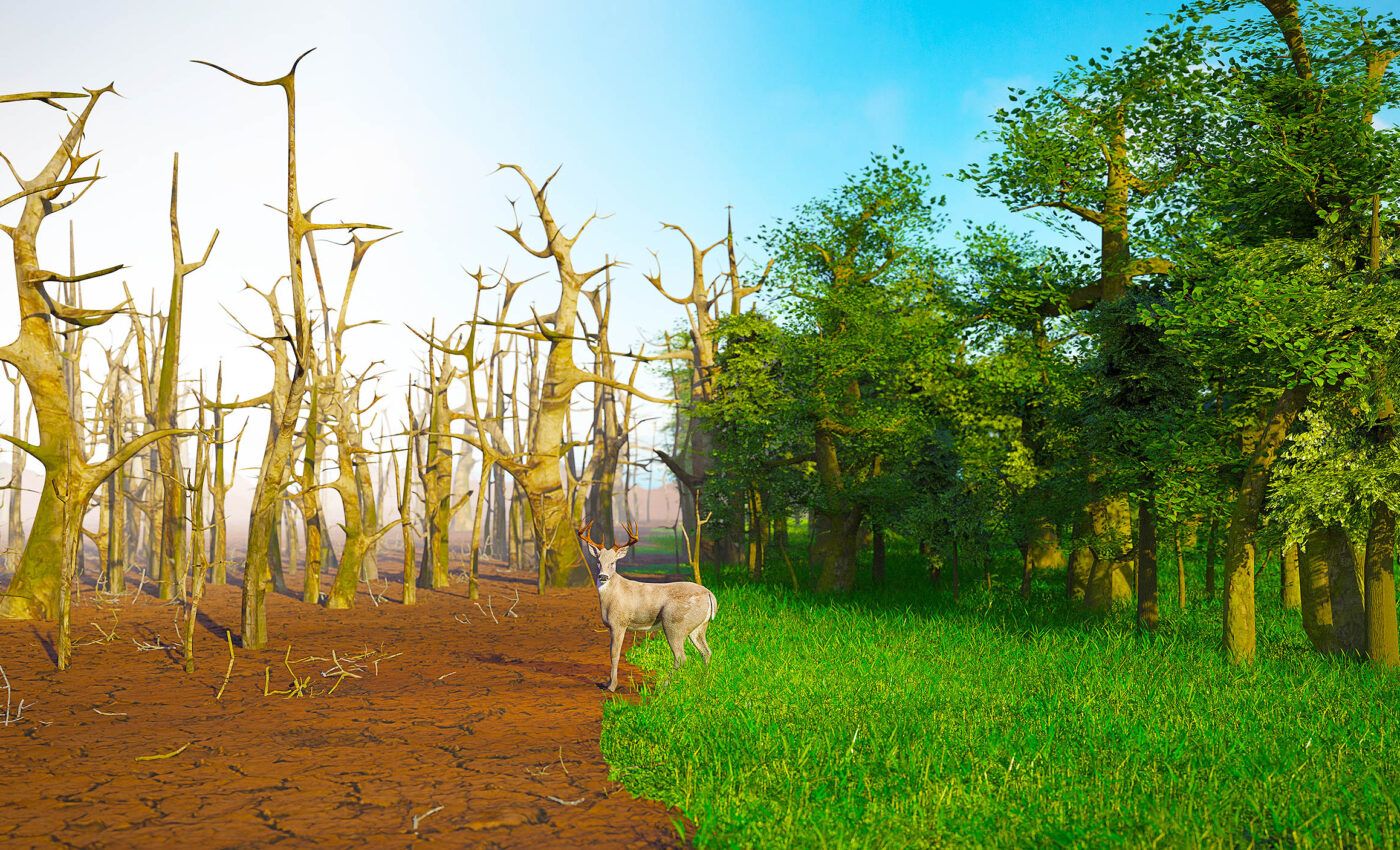
Climate change poses a multi-faceted threat to animal welfare
In a groundbreaking study published in CABI Reviews, scientists have shed light on the multifaceted impact of climate change on animals, with cascading effects observable across several welfare domains. The domains identified are nutrition, environment, behavior, physical health, and mental health.
The comprehensive nature of the study highlights the urgency and complexity of the situation, prompting an imperative need to prioritize research aimed at preserving the welfare and longevity of a broad spectrum of animals – including those used for food, domestic pets, and species preserved in zoos and nature reserves.
The study underscores the risk faced by a diverse range of animals, including bats, zebrafish, stony creek frogs, koalas, African elephants, chickens, and dairy cows.
Assessing the direct impacts
The review argues that while individual species may vary in their biological response to stress, the five-domain model can effectively serve as a tool for researchers to study and assess the direct and proximate impacts of climate change on animal species.
Dr Edward Narayan, lead author of the study and Senior Lecturer of Animal Science in the School of Agriculture and Food Science at The University of Queensland, Australia, emphasized urgency of the situation.
“While researchers have extensively examined the effects of climate change on animals, the direct correlation between climate change and animal welfare, particularly in the context of wild animals, remains relatively scarce in existing studies,” said Dr. Narayan.
A broad perspective on animal welfare
The research group, dubbed “The Stress Lab,” offers a broad perspective on climate change impacts by investigating a multitude of wildlife and domesticated animal examples across various countries and ecosystems.
“We hope that future researchers will apply the animal welfare domains to evaluate how climate change impacts on animals, and further research will pave the way to the protection of animals from the catastrophic impacts of climate change,” said Dr. Narayan.
Animal welfare and heat stress
The review sheds light on compelling research findings, illustrating the depth of climate change impacts on animal welfare. For instance, one study showed a 35% reduction in milk production due to heat stress in dairy cows, thereby affecting their lactation performance, immune function, and calf health.
However, researchers suggest mitigating strategies such as the installation of sunshades and sprinklers, along with careful monitoring of cows’ activity and rumination time.
Heat stress also significantly impacts the welfare of broiler chickens. Exposing chickens to hot conditions for a span of four days has led to an observed increase in cases of necrosis, consequently impacting the quality of their life and meat.
Given that birds lack sweat glands and regulate temperature by panting, drinking more, and limiting activity, scientists argue that installing air conditioning units might be necessary to maintain optimal production temperatures.
Widespread impacts
The impact of climate change on animal welfare extends beyond livestock, impacting wildlife significantly. For instance, frequent and predictable droughts deplete water and vegetation, causing heat and nutritional stress in African elephants, which have significant daily food and water needs. This key contributor is causing the current surge in elephant mortality rates.
Moreover, increased temperatures resulting from climate change are driving marsupials such as koalas towards population decline. This will continue as long as the energy they need to maintain body temperature becomes scarcer due to dwindling food quality.
Domestic pets
Climate change also spares no repercussions for domestic pets. The study observes that certain breeds of dogs are prone to heat stroke, and heat-related diseases are a leading cause of death in military working dogs.
Also, changes in weather conditions have an impact on the level of physical activity and consequently the health of dogs. In the UK, where nearly half the dog population is overweight, hot weather discourages dog owners from walking their dogs, with a reported 87% of owners exercising their dogs less during hot weather.
Further consequences
“As climate change drives more wild populations to ecological limitations, there will be potential welfare consequences and considerations to explore; for example, when vulnerable species would need to be transferred to new environments (e.g., captive breeding), should food and habitat become limiting resources,” said Dr. Narayan.
“Likewise, production animals and other domesticated species will be impacted by the extreme environmental changes with consequences on each of the dimensions within the five domains of animal welfare.”
The revelations of this comprehensive study accentuate the looming challenges that climate change presents for animal welfare, propelling an urgent need for focused, multidisciplinary research to safeguard animal populations worldwide.
—-
Check us out on EarthSnap, a free app brought to you by Eric Ralls and Earth.com.













